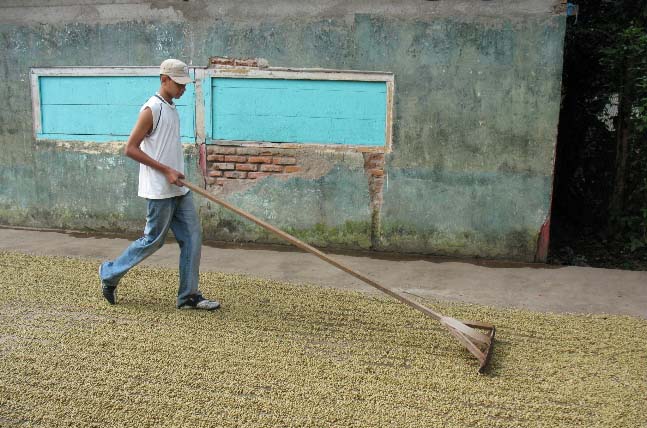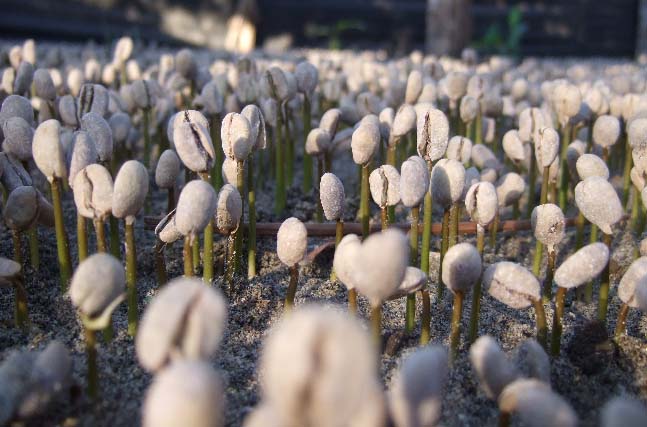Coffee is a commodity of crucial economic importance to more than 60 developing countries. Under current market condistions, annual revenues from coffee exports fluctuate around US$ 10 billion with retail sales of around US$ 50 billion. Among natural commodities, coffee has a monetary value surpassed only by oil! Many producing countries are dependent on coffee for more than 10% of their entire export earnings. While countries such as Burundi, Ethiopia and Uganda – all of them least developed countries – depend on coffee for more than 50% of total export earnings!
 Meanwhile and despite the enormous economic value of the product, the vast majority of coffee — approximately 70% of the world’s total coffee production — is cultivated by some 10 million small-scale farmers living under extremely challenging ecomonic conditions. Many suffer from a lack of access to the most basic services, such clean water, education and suitable housing.. not to mention access to basic and accurate market information, necessary financial resources and the needed physical infrastructure for coffee processing. For a small-scale farmer his or her best hope for economic success in coffee is to get organized, to pool production together with organized producer groups or cooperatives and to negotiate fair prices directly with buyers in national and international markets.
Meanwhile and despite the enormous economic value of the product, the vast majority of coffee — approximately 70% of the world’s total coffee production — is cultivated by some 10 million small-scale farmers living under extremely challenging ecomonic conditions. Many suffer from a lack of access to the most basic services, such clean water, education and suitable housing.. not to mention access to basic and accurate market information, necessary financial resources and the needed physical infrastructure for coffee processing. For a small-scale farmer his or her best hope for economic success in coffee is to get organized, to pool production together with organized producer groups or cooperatives and to negotiate fair prices directly with buyers in national and international markets.
But coffee is an extremely complex commodity. A farmers’ success depends upon many factors, including integrated production systems adapted to the local context, direct links to more lucrative markets and the know-how to best take advantage of those links… as well as a certain amount of luck and timing as the international base-price fluctuates wildly.
There are numerous species of Coffee now grown for the commercial market. Arabica coffees account for 75-80 percent of the world’s coffee production, while robusta coffees account for about 20 percent.
The coffee tree produces red or yellow fruits called “cherries” similar in appearance to cranberries. The cherries contain two seeds, which once processed is the “bean” to be roasted and consumed. In approximately 5 percent of any give harvest, the cherry produces a single seed, rather than the usual double seeded cherry, This is called a peaberry, which is smaller and rounder than the standard coffee bean.
As a perennial plant with a single, annual harvest season – best production practices are of the utmost importance. This becomes increasingly challenging as weather, deteriorating soil conditions and periodic insect and illness infestation can wreak havoc from one year to the next in coffee producing countries.
If the coffee bush is damaged, the farmer could lose his entire annual production from the tree. And if the damage is serious and requires complete replanting — this means another 3 to 5 years before the farmer will recover production.
And the coffee market – both locally and internationally – is equally unpredictable. For many years farmers have suffered from record low prices, making solidarity initiatives such as Fair Trade essential for farmer cooperatives’ survival. But when market prices hit record highs – the challenges do not disappear; but they are transformed and require an entirely different set of skills.
Today a cooperative leader must not only be farm savvy with appropriate and sustainable production practices and well linked to the local farmer communities. He or she must also be a financial analyst and a skilled communications manager in order to keep their organizations strong and to keep product flowing through their structures and out of the hands of over-zealous middlemen.
































